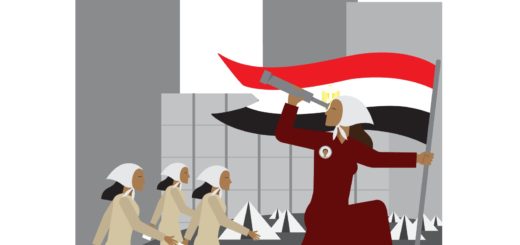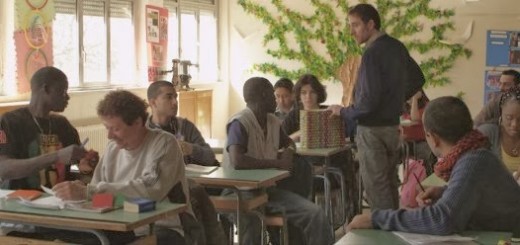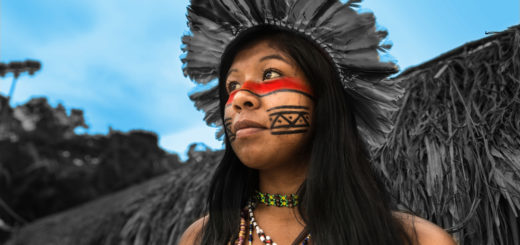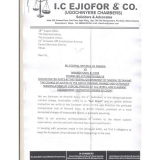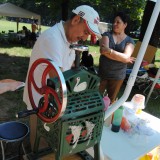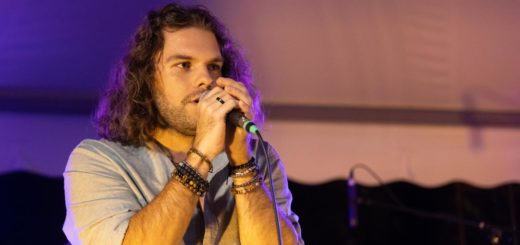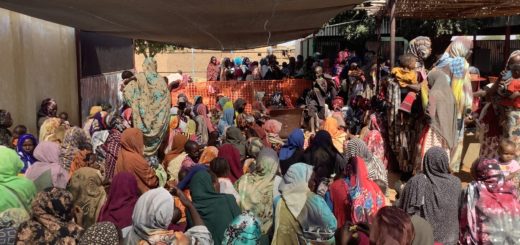Riscoprire il proprio territorio
Quando le ragazze e i ragazzi di un scuola superiore (4D dell’IIS di Lercara Friddi), partendo dalla lettura del libro “Visioni periferiche. la narrazione dell’hinterland in Italia e nel mondo”, Multimage e dal laboratorio legato ad esso, si interessano del proprio territorio e vanno a riscoprirlo, facendo ricerche, approfondimenti e dando risposte ai temi del welfare, dei diritti, della cittadinanza attiva…
Non finiremo mai di ringraziarli e di ringraziare la professoressa che li ha stimolati.
Ecco due lavori delle studentesse e degli studenti.
Institute Andrea Reres Mezzojuso
Andrea Reres in 1609 bound 4,000 ounces with the obligation to build a Basilian monastery in the church of Santa Maria di tutti le Grazie, administered by a Confraternity founded since 1529 by the Albanian faithful, in which, under penalty of transience, the monks had to always be Greek or Albanian, professing the oriental rite and discipline. Completed in 1648, the building welcomed the first monks who came from the famous Monastery of Aghìa Triàs in the Acrotiri area of the island of Candia. Soon the small community grew; the novitiate was opened and many young people came from the Albanian colonies of Sicily. In a short time the Monastery became so luxuriant, animated by learned and holy monks that it was able to support missions in Albania, for about a century and with such fruit that four of its sons deserved the high honor from the Holy Apostolic See of be awarded the archiepiscopal dignity. Over time, originating from the monks’ personal collection of books, a substantial library was established there, which grew in a varied and eclectic way. The activity of the monks was aimed at the education and training of young people, and the Monastery became for about two centuries a center of radiance of culture, a true Athenaeum of the Albanian colonies. The monks, who arrived from Crete, as well as from the continental regions of Greece, remained scrupulous observers of the oriental monastic disciplines, not neglecting at the same time to sow the seed of Hellenic culture.
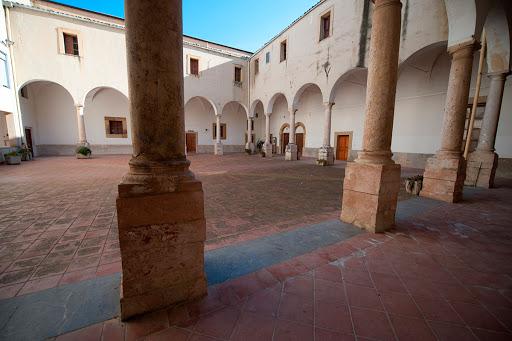

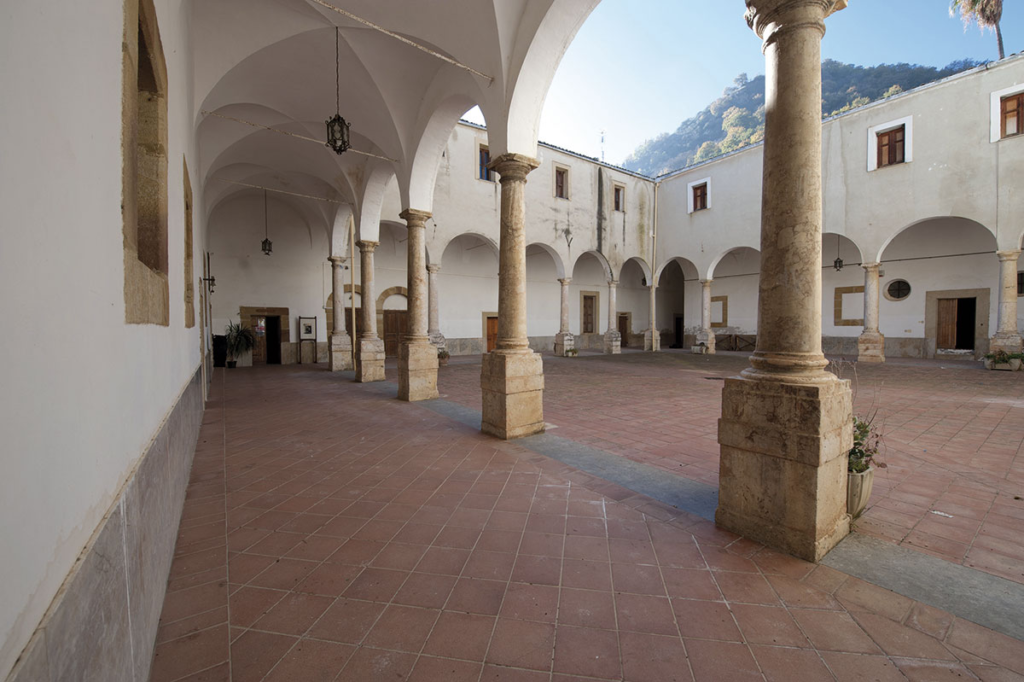
It is precisely this spirit of theirs, as well as their artistic talent, for the creation of what currently constitutes the most conspicuous and precious part of the iconographic heritage of the Eparchy of Piana degli Albanesi. In fact, the Cretan Jeromonk Joannikio worked in Mezzojuso, teacher of a school of iconography that has been defined as Sicilian-Cretan. The Monastery, however, after so much luster and decorum, had a period of decline, so much so that the laws of 1866-67, which suppressed the religious corporations, found it in a slow agony. After it was confiscated by the State Property, the Company of S. Maria of all the Graces, availing itself of its rights deriving from the testamentary disposition of Reres, obtained its restitution and provided for a partial restoration of the vast monastic building. This however, abandoned by the monastic community, remained practically deserted; during the First World War it was also used as a barracks where to keep the Austrian prisoners of war who used some precious books from the library as fuel to feed the fire needed to warm themselves. In 1920 the Confraternity approved the foundation in the Monastery of the “Andrea Reres Institute”, for the education and culture of young Albanians of the Greek rite, and entrusted it to the Basilian Fathers of Grottaferrata who provided for the recovery of the monastery premises and reconstitution of a new library, in which the works that had been saved from the dispersion of the old library have converged.
We would like to use this building in a different way as it is equipped with both an external and internal environment and it would be ideal to use it to carry out multiple activities that mainly concern young people.
In the past it was used to welcome immigrants but was soon abandoned but the reasons have not yet emerged.
It would be an excellent opportunity to revive a space so useful for all the citizens of Mezzojuso.
Created by: Bisulca Fabiana and Billone Natalia
The wonders of vicari
La cuba araba
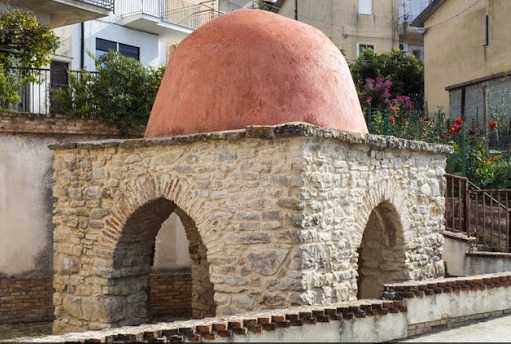
| Also known as Cyprine’s Cuba, it is an emblematic architectural presence that represents the imprint of Arab culture in Vicari territories. This structure was formerly built in the open countryside, in fact in ancient time it was practically immersed in greenery, but over time and with the subsequent expansion of the city core, it no longer remained an isolated territory, but became an integral element of the town, which gave the name to the neighborhood: ‘Cyprine neighborhood’. It consists of a domed roof, and four openings in the shape of arches which are precisely aimed at the four cardinal points, and it is precisely from this element that the construction has come to be considered Arabic. The term “Ciprina” or “ciprigna” has Greek origins; Ciprina in fact was the name that in the classical period was attributed to the goddess Venus. The most plausible hypothesis therefore would be that the “Cuba” was in ancient times dedicated to Venus, or that it was erected over the remains of some building from the classical period. The Arab Cuba of Vicari in addition has in itself some typical elements similar to the Arab buildings scattered in Sicily. However, it is thought that the construction was made for the use of a cistern, in fact during the Arab era, it was most likely part of the water network the Arab aqueduct. |
The castle of vicari
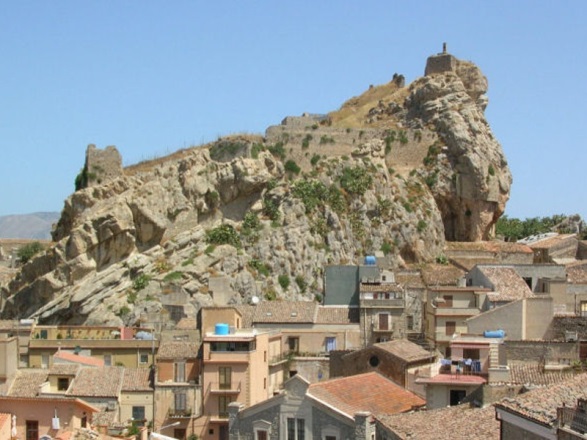
One of Vicari’s most relevant and emerging architectural elements is represented by the Castle. Rising on a rock at a height of 700 meters, it overlooks the entire “Vicarese” town. Some historical sources state that this building was erected during the Roman period; while its restructuring dates back to the 1390s at the time of Manfredi di Chiaramonte. Currently the most visible parts of the castle are: the remains of the crenellated walls; the mill tower and the “fausa” gate, the remains of the cisterns, brought to light by the last archaeological excavations. But we can certainly say that this construction was used mainly as a real fortress. In fact, in 1077 Count Roger used it as a base for attacking the castle of Castronovo. In 1278, also the castle di Vicari was counted among the royal fortresses of Sicily. The most important episodes anyway they date back to the time of the battle of Vespers, when the minister took refuge there in 1282 by Carlo D’Angiò, Giovanni di S. Remigio. Originally, perhaps during the early Christian period, or at the latest in the Byzantine era, it was assumed that the castle had had an entrance a VESTIBULUS, later transformed into the church of Santa Maria del Boikos, and was surrounded by west by crenellated walls, of which we still find remains today.
Inside today we can admire the presence of two towers, one called the MULINO, which presents on the four sides of the ogival windows and the other open towards the inside the castle, towards the famous PORTA FAUSA or BUMMARA, (nomenclature that attests the ancient presence of Muslims in the Vicarese territories).
Today our wonders cannot be visited , but we really hope to make up for lost time and offer tourists occasions to meet friendly people and an old traditional culture!
We are not real tourist guides, but we know well everything about our little town, so we are looking forward to welcoming everyone who wants to meet something out of the traditional tourist tours!
Eleonora Mangiafridda
Martina Saccio
Alice Barbabbaccia
Noemi Manfrè Aurora Vicari

